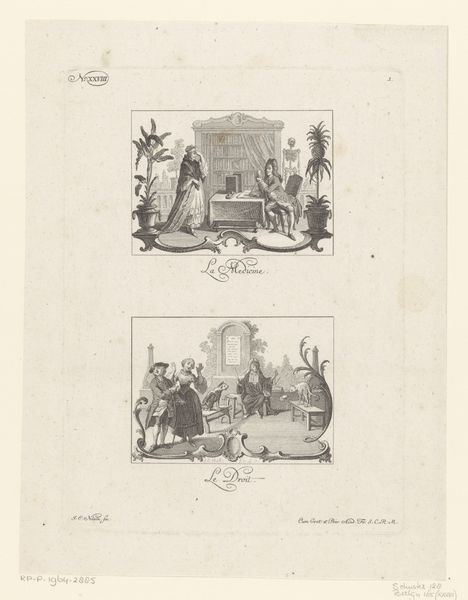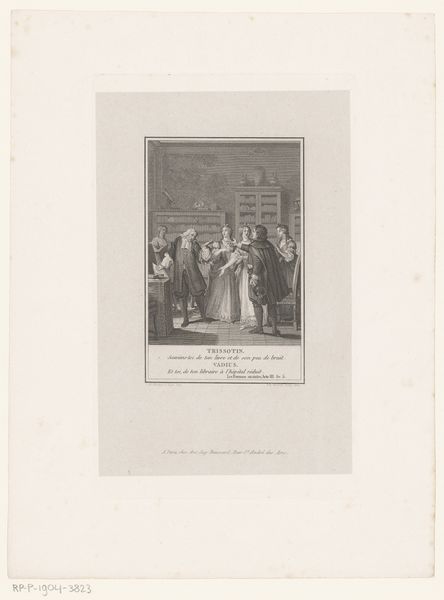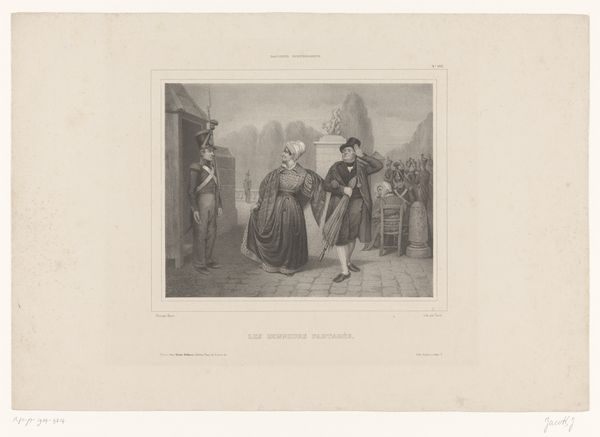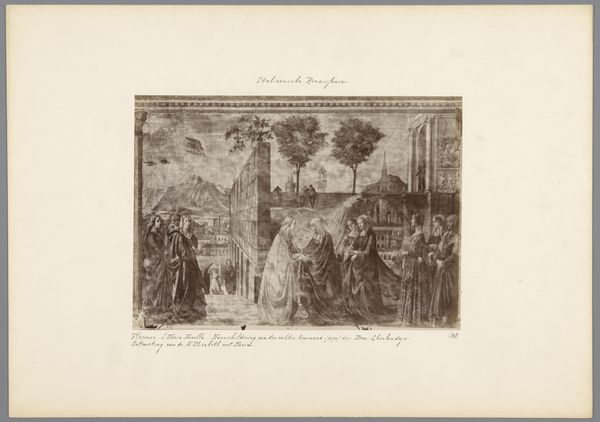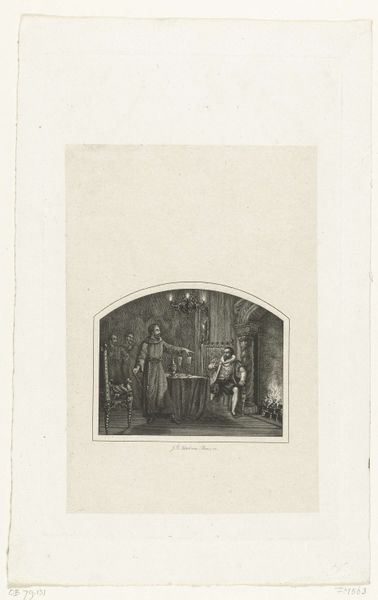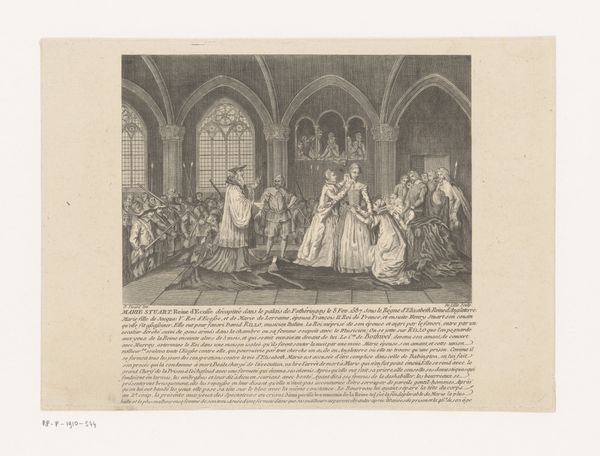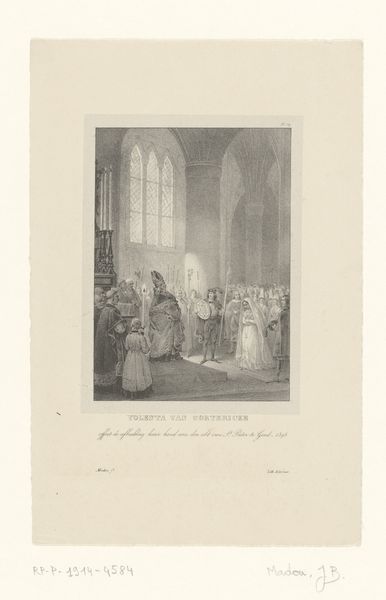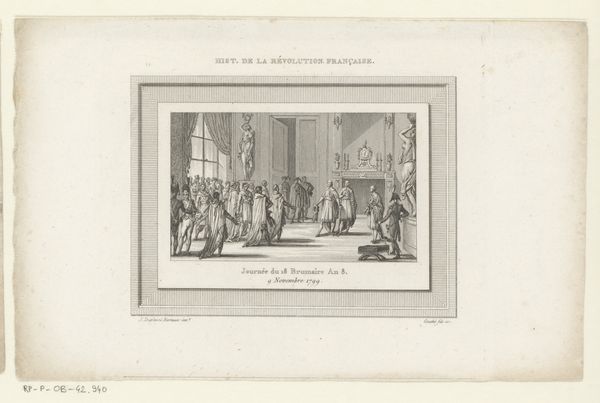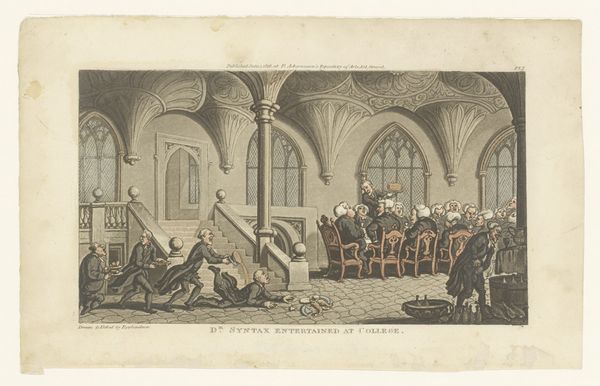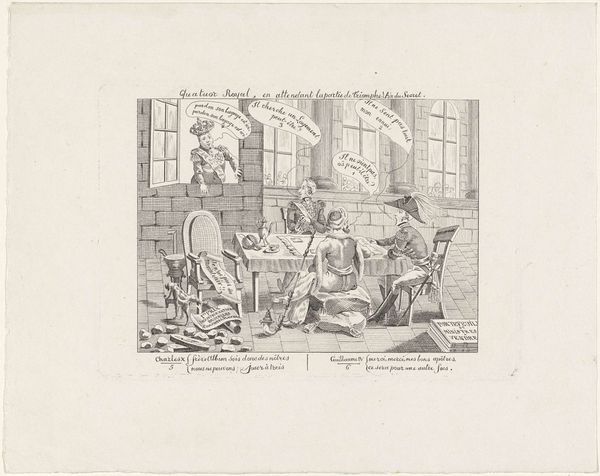
Geestelijke onderwijst een groep kinderen en kinderen onderwijzen elkaar c. 1819 - 1834
0:00
0:00
#
photo of handprinted image
#
light pencil work
#
pale palette
#
pale colours
#
wedding photography
#
light coloured
#
old engraving style
#
pen-ink sketch
#
celebration photography
#
vignette lighting
Dimensions: height 115 mm, width 160 mm
Copyright: Rijks Museum: Open Domain
Curator: This print by Jean-Baptiste Madou, titled 'Geestelijke onderwijst een groep kinderen en kinderen onderwijzen elkaar,' from around 1819 to 1834 and residing at the Rijksmuseum, immediately presents a dichotomy in educational philosophy. What strikes you first? Editor: The composition is cleaved cleanly in two! It's not just thematically split, but visually, architecturally...it almost looks like a before-and-after image in a pamphlet. There's such a strong contrast. One side, all pale gothic arches, and the other a darker, more cramped space. Curator: Indeed, Madou visually contrasts traditional clerical teaching with a new "mutual" instruction method. Note how he employs symbolism. On the left, cloistered in a gothic, religiously suggestive space, we have an adult instructing children who are made to kneel or sit passively on the ground. In this arrangement, they learn in uniformity through "ignorance," the Dutch text reading. But note on the right how the text denotes children instructing each other with a more dynamic arrangement, one side active and the other not. Editor: Semiotically, we can read this as a challenge to established order. The composition steers you from the archaic rigidity on the left to the lively exchange on the right, reflected in the differing lighting techniques as well. The shadows feel almost oppressive. This isn't merely a scene of teaching, but a visual argument. What emotional reverberations do you find most potent here? Curator: It stirs conflicting emotions, but not surprisingly: while there is some quaintness associated with the historical teaching methods on the left, I read this imagery now, with the long shadow of authoritarian educational environments present throughout modern history, as an allusion to lost voices and the suffocation of individual potential within some old hierarchies. Editor: Agreed. It reveals not only evolving pedagogical methods, but how shifting structural aesthetics, like darker to lighter backdrops, underscore ideological shifts in thought. The division embodies and amplifies those very subtle nuances through architecture. Curator: Seeing it together allows one to consider what symbols or emotional triggers may resonate. Madou uses recognizable architectural cues of shadow, structure, and perspective to evoke powerful historical, intellectual, and, arguably, ethical concerns. Editor: An enlightening contrast beautifully captured—or rather, cleaved!
Comments
No comments
Be the first to comment and join the conversation on the ultimate creative platform.

